Sign up now to receive 15% off* your first order.
*Valid with minimum $100 order value in cart.
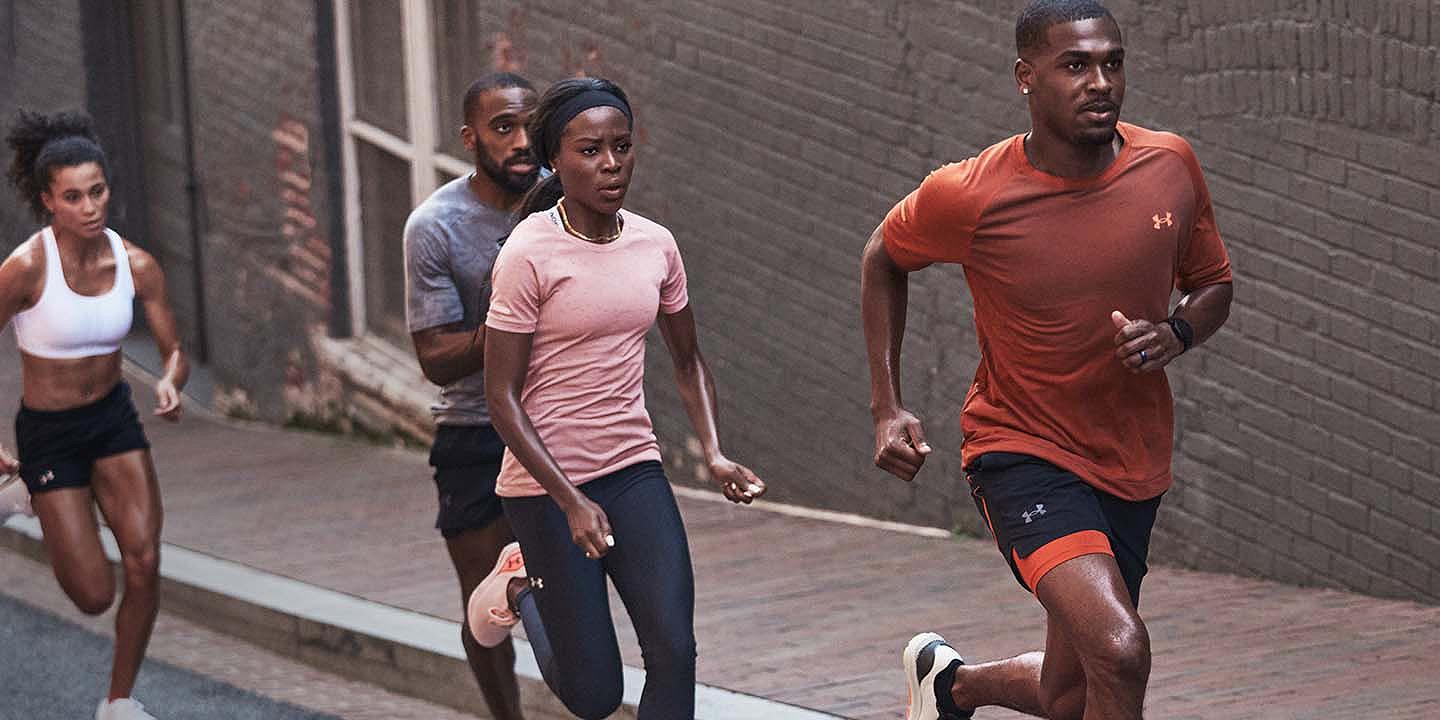
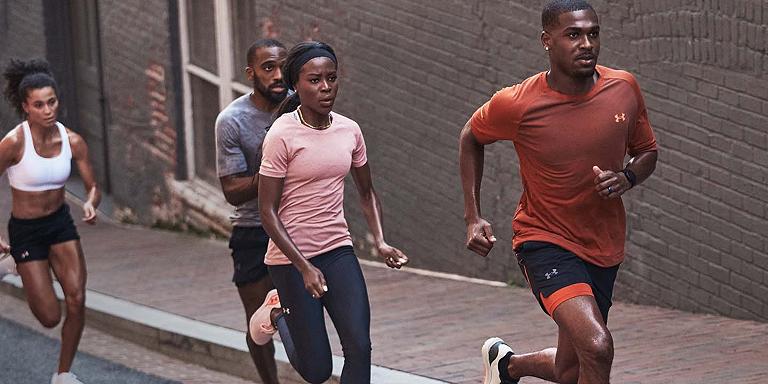
Quick Tips to Run Faster & Further
Quick Tips to Run Faster & Further
Running is lightweight, liberating and an effective cardiovascular exercise. It is also a fuss-free activity that can be done anywhere and at any time. But if you want to become a better runner and unlock your personal best, you’ll need the right running shoes to really amp up your performance.
Many runners don’t realise how important it is to invest in the right pair of running shoes during their training. Running shoes with the right fit for your feet and suited to where you run can shave off seconds to help you beat your personal best.
In this article, we’ll tell you everything you need to know about unlocking your personal best - from providing essential running tips, assessing feet types and recommending the best shoe types to help you run faster and longer.
Running is lightweight, liberating and an effective cardiovascular exercise. It is also a fuss-free activity that can be done anywhere and at any time. But if you want to become a better runner and unlock your personal best, you’ll need the right running shoes to really amp up your performance.
Many runners don’t realise how important it is to invest in the right pair of running shoes during their training. Running shoes with the right fit for your feet and suited to where you run can shave off seconds to help you beat your personal best.
In this article, we’ll tell you everything you need to know about unlocking your personal best - from providing essential running tips, assessing feet types and recommending the best shoe types to help you run faster and longer.
Recommended Running Shoes
When it comes to running, being consistent is key.
For a runner, consistency means having a reliable training plan that you stick to. A consistent training schedule helps you build speed, endurance and strength so you can achieve new goals and run the race of your dreams. You’re not going to see results overnight, but with time and dedication, you will see improvement.
The bottom line is, if you want to be a better runner, you have to run. It sounds simple enough, but life can get in the way. Between work and family obligations, most runners have only a few hours a week to dedicate to training. The road to running success requires working with consistency over time.
When it comes to running, being consistent is key.
For a runner, consistency means having a reliable training plan that you stick to. A consistent training schedule helps you build speed, endurance and strength so you can achieve new goals and run the race of your dreams. You’re not going to see results overnight, but with time and dedication, you will see improvement.
The bottom line is, if you want to be a better runner, you have to run. It sounds simple enough, but life can get in the way. Between work and family obligations, most runners have only a few hours a week to dedicate to training. The road to running success requires working with consistency over time.
Set short and long-term goals to motivate you and track your progress over time. Start with a training plan to help you stay consistent in accomplishing your goal as a better runner. Make running feel easier and increase your cadence with shoes connected to Map My Run. With a chip in your shoe, it sends data to your phone to identify your foot strike angle, ground contact time and cadence. Not only do you get data from your runs, it offers personalised coaching tips to improve your performance. Get 7% faster and 3% farther with running shoes that make you better.
Set short and long-term goals to motivate you and track your progress over time. Start with a training plan to help you stay consistent in accomplishing your goal as a better runner. Make running feel easier and increase your cadence with shoes connected to Map My Run. With a chip in your shoe, it sends data to your phone to identify your foot strike angle, ground contact time and cadence. Not only do you get data from your runs, it offers personalised coaching tips to improve your performance. Get 7% faster and 3% farther with running shoes that make you better.
There’s no such thing as too short, slow or little.
To run longer distances or to run faster, take it step-by-step. Improve your running technique by running for time rather than distance. Start by running for five minutes, then gradually build up the amount of time you spend on the road, track, or trail until you reach 30 minutes in a single session. The key is to start at your comfort level and gradually improve your running stamina. A good way to measure speed is by effort level: you should be able to carry out a conversation without gasping for breath. If you're too out of breath, try to slow it down a bit. Then begin adding speed work, intervals and long runs over time.
When increasing distance, it's important not to push too hard too quickly. For most runners, a 3 km increase can be too much. Instead, increases in smaller increments, such as 0.5 km each week could be more beneficial when improving performance long term.
There’s no such thing as too short, slow or little.
To run longer distances or to run faster, take it step-by-step. Improve your running technique by running for time rather than distance. Start by running for five minutes, then gradually build up the amount of time you spend on the road, track, or trail until you reach 30 minutes in a single session. The key is to start at your comfort level and gradually improve your running stamina. A good way to measure speed is by effort level: you should be able to carry out a conversation without gasping for breath. If you're too out of breath, try to slow it down a bit. Then begin adding speed work, intervals and long runs over time.
When increasing distance, it's important not to push too hard too quickly. For most runners, a 3 km increase can be too much. Instead, increases in smaller increments, such as 0.5 km each week could be more beneficial when improving performance long term.
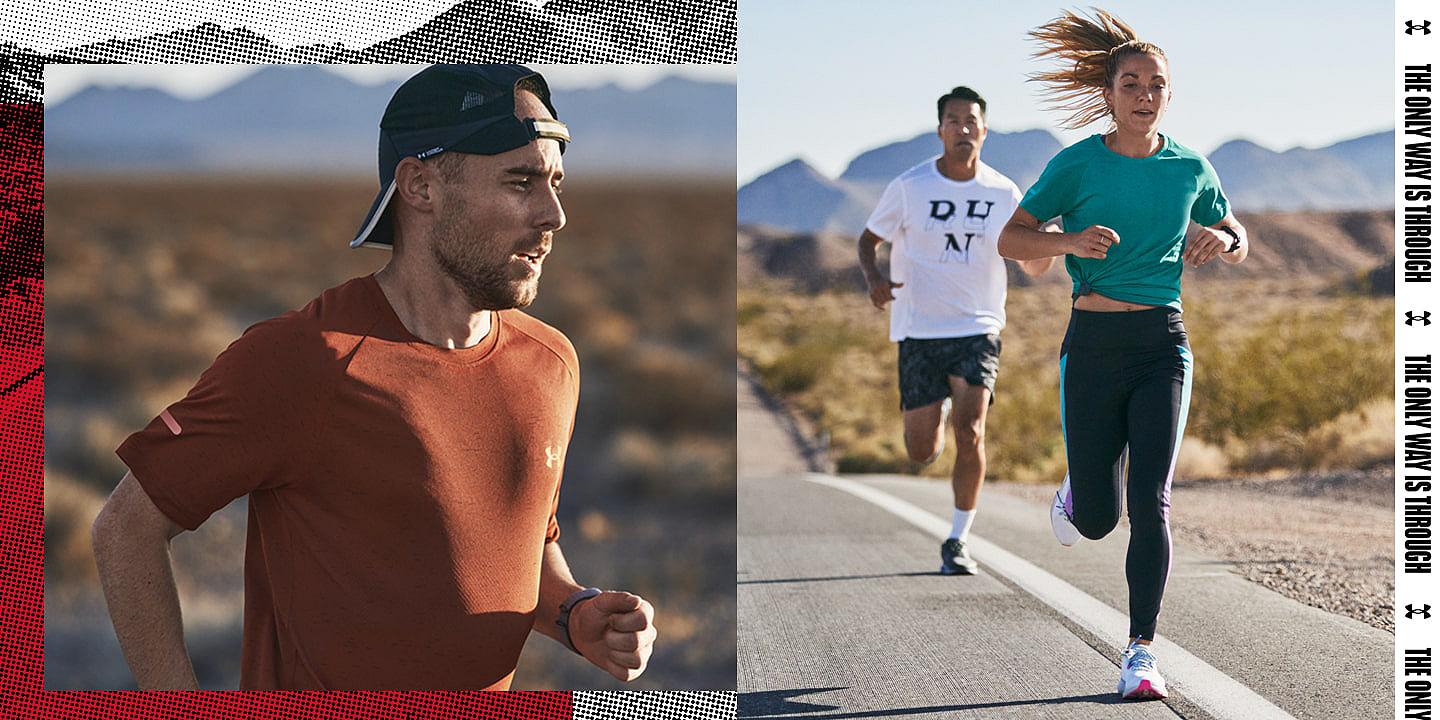
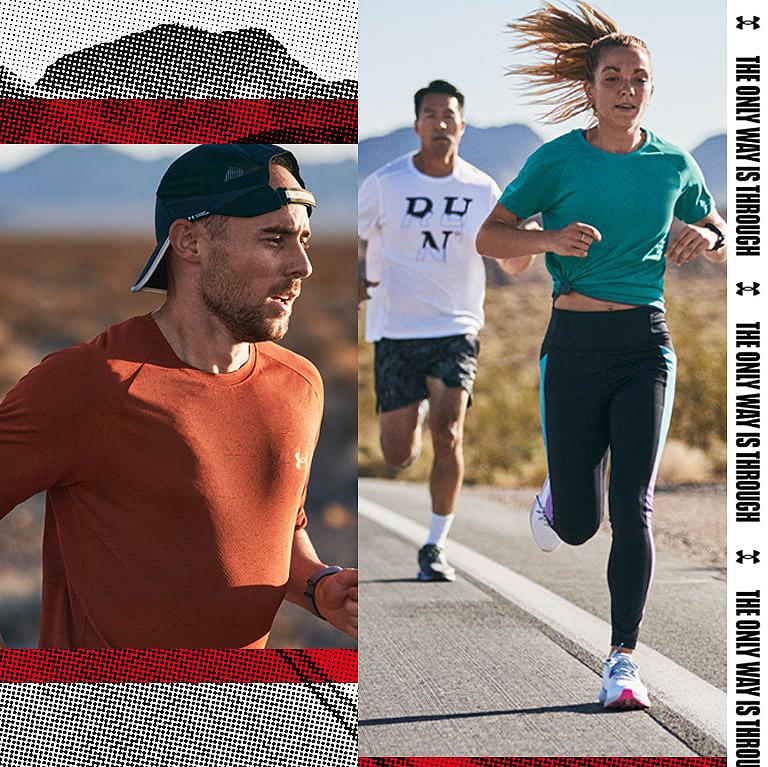
Good running shoes can improve your performance.
Good running shoes can improve your performance.
Knowing what your foot type is can help you narrow down your search and make it easier to find the right shoe that complements your jogging form. It determines the level of cushioning you require in your running shoe. In general terms, there are four main types of feet
– flat feet, neutral feet, high-arched, and wide feet.
Knowing what your foot type is can help you narrow down your search and make it easier to find the right shoe that complements your jogging form. It determines the level of cushioning you require in your running shoe. In general terms, there are four main types of feet
– flat feet, neutral feet, high-arched, and wide feet.
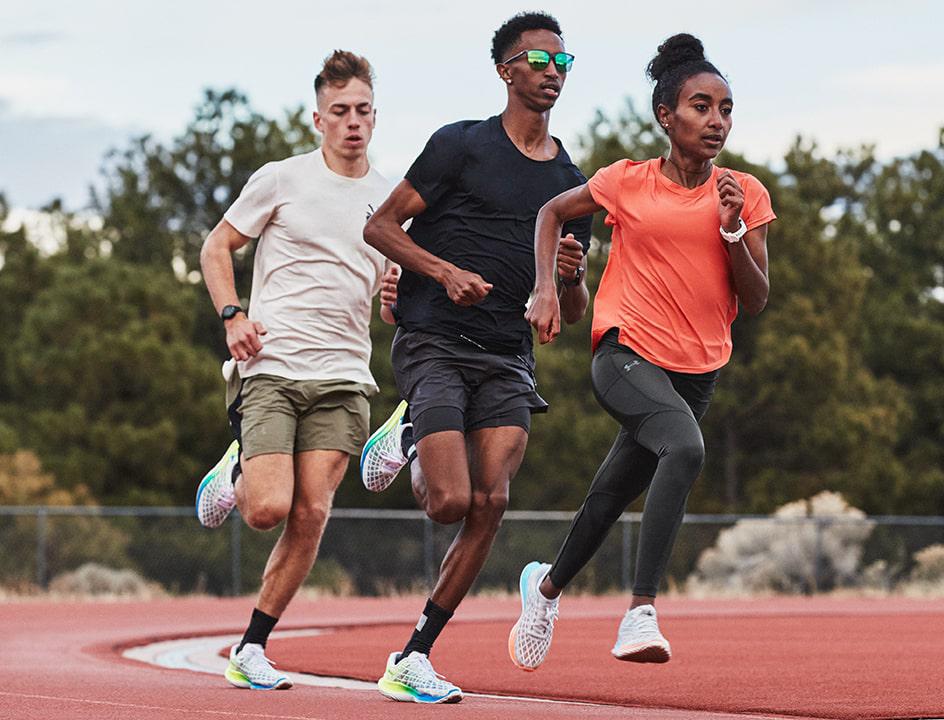

Flat Feet
A flat foot or low arch does not have a normal arch when standing, but it forms one when weight is placed on it. Flat feet usually roll inward excessively (overpronate) when walking or running, causing an inward leaning at the ankles and knees. This can lead to injuries and pain in the ankles, knees and hips.
Recommended shoe type:
- Motion control running shoes designed for stability.
- Running shoes with medial support (a firm material on the inside of the midsole against the arch).
Flat Feet
A flat foot or low arch does not have a normal arch when standing, but it forms one when weight is placed on it. Flat feet usually roll inward excessively (overpronate) when walking or running, causing an inward leaning at the ankles and knees. This can lead to injuries and pain in the ankles, knees and hips.
Recommended shoe type:
- Motion control running shoes designed for stability.
- Running shoes with medial support (a firm material on the inside of the midsole against the arch).
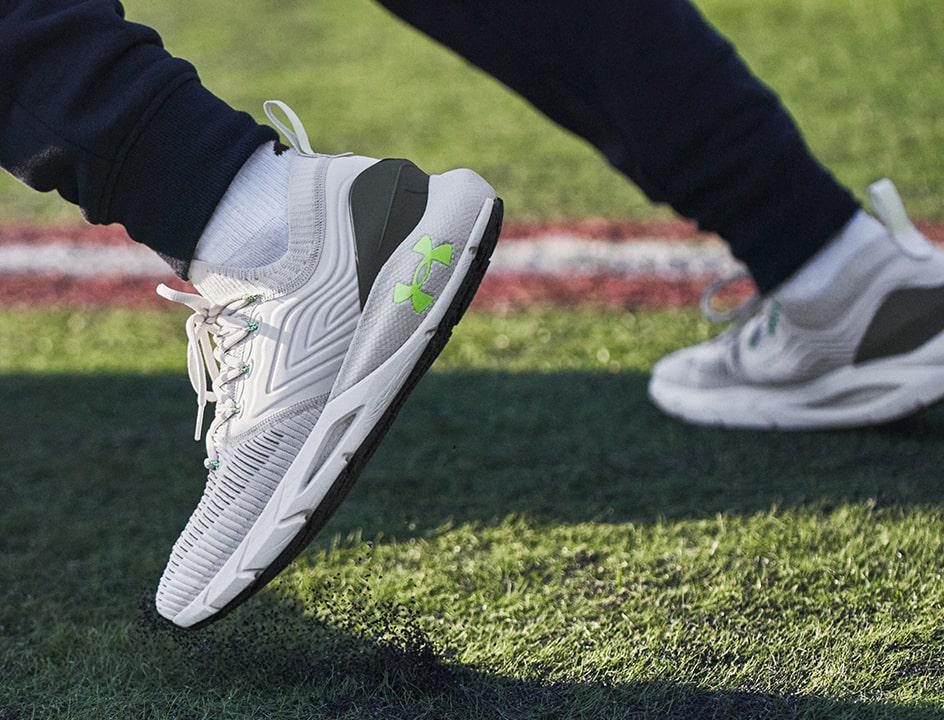

Neutral Feet
A neutral or normal arch has a slight curve at the middle of the foot, which allows for an even distribution of weight across this area. This also means that pronation will be natural and moderate.
Recommended shoe type:
- Shock absorption running shoes with minimal stability control.
- Running shoes with a semi-curved shape with flexibility around your midfoot.
Neutral Feet
A neutral or normal arch has a slight curve at the middle of the foot, which allows for an even distribution of weight across this area. This also means that pronation will be natural and moderate.
Recommended shoe type:
- Shock absorption running shoes with minimal stability control.
- Running shoes with a semi-curved shape with flexibility around your midfoot.
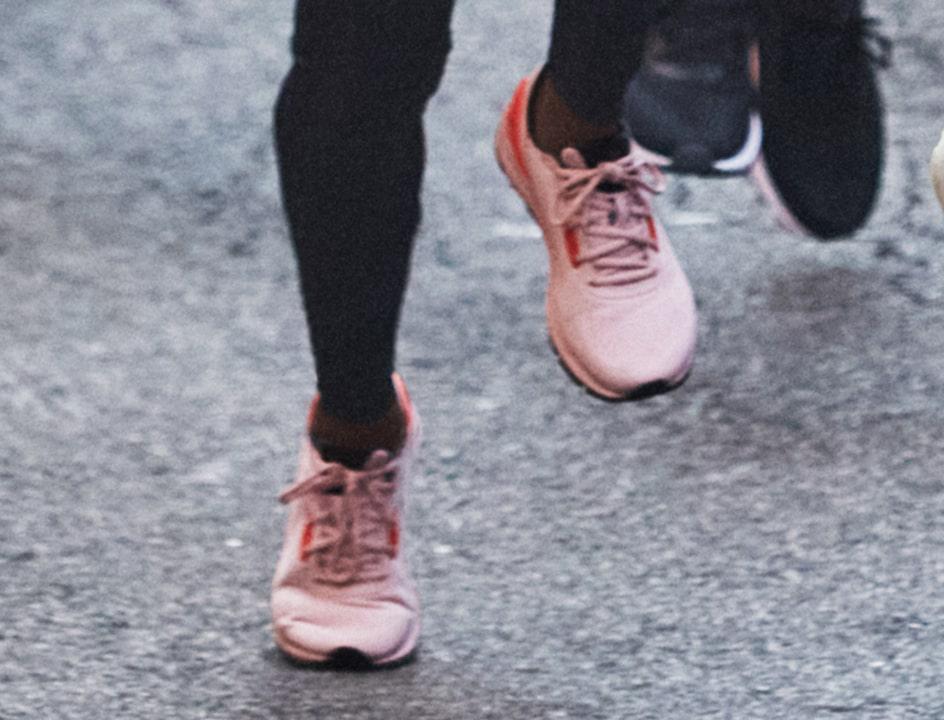

High-Arched
If you have a high arch and underpronate, the impact of your foot hitting the ground will cause an outward rolling motion (supination). This can lead to shin splints and other overuse injuries.
Recommended shoe type:
- Highly-cushioned running shoes.
- Flexible running shoes that's curved or semi-curved.
High-Arched
If you have a high arch and underpronate, the impact of your foot hitting the ground will cause an outward rolling motion (supination). This can lead to shin splints and other overuse injuries.
Recommended shoe type:
- Highly-cushioned running shoes.
- Flexible running shoes that's curved or semi-curved.
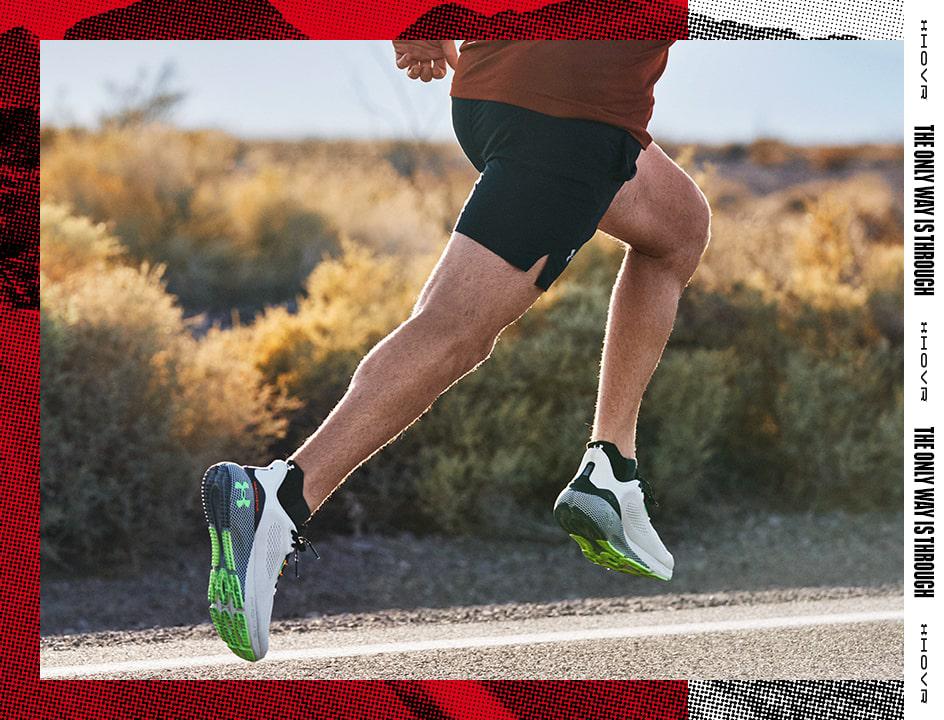

Wide Feet
The first thing to consider when selecting running shoes for wide feet is the fit. Unlike regular-width running shoes, which often have a narrow toe box, wide running shoes have a wider toe box. This allows for increased room for the toes, which can help prevent blisters, inflammation and other injuries. Shoes that are too narrow can also rub against the foot and cause friction in areas where it’s not wanted.
Recommended shoe type:
- Extra-cushioned midsole and heel cup
- Running shoes with wide toe box
Wide Feet
The first thing to consider when selecting running shoes for wide feet is the fit. Unlike regular-width running shoes, which often have a narrow toe box, wide running shoes have a wider toe box. This allows for increased room for the toes, which can help prevent blisters, inflammation and other injuries. Shoes that are too narrow can also rub against the foot and cause friction in areas where it’s not wanted.
Recommended shoe type:
- Extra-cushioned midsole and heel cup
- Running shoes with wide toe box
At Under Armour, we’re driven by the need to create the best footwear technologies to help you perform your best.
At Under Armour, we’re driven by the need to create the best footwear technologies to help you perform your best.
UA HOVR™ Technology
UA HOVR technology uses a two-piece midsole and a “zero gravity” foam to provide a soft, cushioned feel that takes in the impact of each foot strike and then releases the energy back into your next step. The result is an effortless, weightless feeling that helps you stay invigorated for longer.
UA HOVR™ Technology
UA HOVR technology uses a two-piece midsole and a “zero gravity” foam to provide a soft, cushioned feel that takes in the impact of each foot strike and then releases the energy back into your next step. The result is an effortless, weightless feeling that helps you stay invigorated for longer.
UA Flow
The science behind UA Flow is really simple: we’ve created a new type of midsole that is ultra-lightweight, grippy and responsive. Each step will feel like the ultimate springboard for better performance as you push toward the finish line. This isn't just a new foam; it’s an entirely new technology.
“The Flow Foam provides cushioning, flexibility and traction, all in one package.”
-Helen Woo
Senior Director of Biomechanics | Under Armour
UA Flow
The science behind UA Flow is really simple: we’ve created a new type of midsole that is ultra-lightweight, grippy and responsive. Each step will feel like the ultimate springboard for better performance as you push toward the finish line. This isn't just a new foam; it’s an entirely new technology.
“The Flow Foam provides cushioning, flexibility and traction, all in one package.”
-Helen Woo
Senior Director of Biomechanics | Under Armour
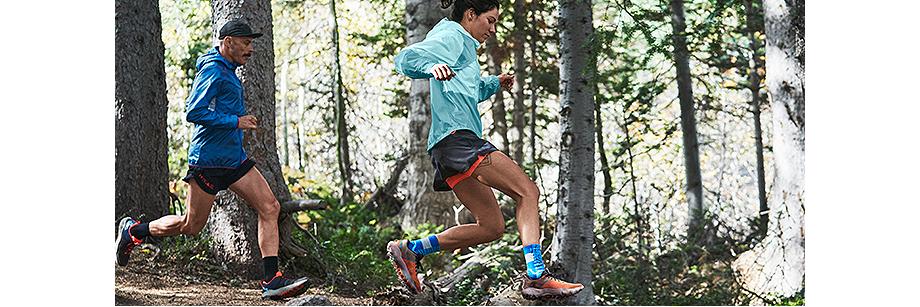
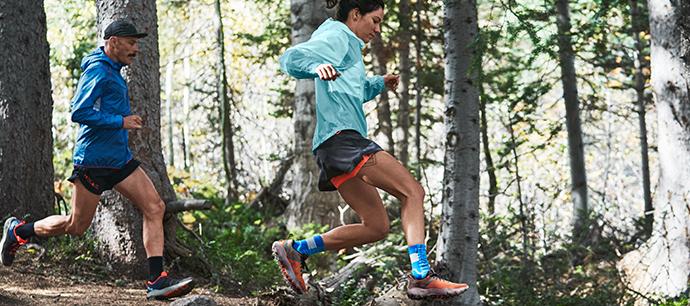
How to choose the best running shoes for you
It doesn't matter if you're a sprinter or a marathon runner, or whether you love to run on trails, or on the road. Prevent injuries with the right pair of running shoes that supports your foot and style of running.
If you’re choosing a pair of running shoes to sprint – lightweight running shoes with a good grip is what you need. For marathon runners, a running shoe with the right level of cushioning, ventilation, and durability is what you’ll need to go the distance.
It’s also important to consider the terrain when thinking of which running shoe might suit you best. Trail running shoes with a thicker outsole, sturdier midsole, and reinforced uppers would help you navigate through the tricky terrain. With long distance running shoes, the outsole, weight of the running shoe, and the cushioning might provide you with better support for marathons.
How to choose the best running shoes for you
It doesn't matter if you're a sprinter or a marathon runner, or whether you love to run on trails, or on the road. Prevent injuries with the right pair of running shoes that supports your foot and style of running.
If you’re choosing a pair of running shoes to sprint – lightweight running shoes with a good grip is what you need. For marathon runners, a running shoe with the right level of cushioning, ventilation, and durability is what you’ll need to go the distance.
It’s also important to consider the terrain when thinking of which running shoe might suit you best. Trail running shoes with a thicker outsole, sturdier midsole, and reinforced uppers would help you navigate through the tricky terrain. With long distance running shoes, the outsole, weight of the running shoe, and the cushioning might provide you with better support for marathons.